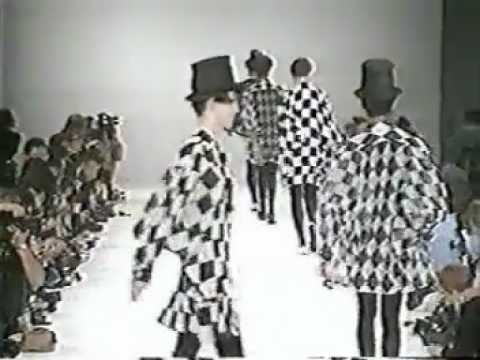
John Roberts’ Guide to Intermedia Labels and Publishers
I’ve always been drawn to labels and publishers that document subcultures, friends’ work and inexplicable bursts of creativity within the confines of a self-defined vocabulary. I’m particularly interested in those that disregard the limitations of a single medium and explore the ways in which releases spanning different physical or non-physical forms color peoples’ perception of their ideas. I’ve recently started a label called Brunette Editions and wanted to share some of the interdisciplinary producers that have inspired me to take on a project of a similar vein. They’re presented roughly in the order that I came in contact with them.
Dial Records
When I moved to Berlin, Pete Kersten and David Lieske—aka Lawrence and Carsten Jost—gave me a pile of records and CDs from the Dial back catalog. The ones that stuck with me the most were the Pyramid Drift 12″ compilation of experimental songs and Dirk von Lowtzow’s Septem Sermones Ad Mortuos, which is a spoken word record. Both were released in conjunction with outside exhibitions in Berlin and Oslo, respectively. I suppose both made an impression on me for how casually they were presented along with the other records in the pile. David and Pete were willing to release anything that they found interesting and didn’t (and still don’t) care about falling in line with any sort of music industry or audience expectations.
Aspen Magazine
I first became aware of Aspen through David Lieske as he was preparing the artwork for the Dial Records’ ten year anniversary compilation. He wanted to use photographs of its Minimalism Issue, which was a striking white box of 28 items. There were printed essays from Roland Barthes and Susan Sontag, some 12″ records, two of which included recited texts from Burroughs & Beckett, cardboard model parts, musical scores by Morton Feldman and John Cage, four artist films on a reel of super-8 film and other material. I was always really struck by the photos by Fionn McCann that David decided to use for the Dial compilation, but they mostly lived in the back of my mind until a few years later when I actually took the time to investigate Aspen a bit further. I was shocked to find out that its ten multimedia issues included work from so many of the names that I have been interested in from all creative fields. Each edition is all over the place media-wise, and the collected issues are infinitely fascinating time capsules of the art, literature and music worlds of that time period. Luckily, the entirety of the catalog is now archived on the Ubu website, so there’s at least a way to experience the content of each issue in digital form.
Factory Records
Over the years I’ve listened to a lot of the classic Factory records, but when Bernard Sumner from Joy Division and New Order was interviewed for The Travel Almanac, I started investigating the label a bit further. Everyone is pretty struck by Peter Saville’s artwork for Factory Records, but I also love how the label used catalog numbers to give importance to other items and events beyond their records. Over time there were catalog numbers assigned to posters, club nights, packing tape, a bucket and a lawsuit, among other things.
Les Disques Du Crépuscule
My favorite record is a compilation called From Brussels With Love, which came out on the Belgian label Les Disques Du Crépuscule in 1980. It has all sorts of musical offerings, some more polished than others, from the likes of John Foxx, the Durutti Column and A Certain Ratio, some poetry and an amazing spoken interview with Brian Eno. It was originally released as a collection of items in a plastic 7″ sleeve with a 15-page booklet (a sort of elevated fanzine including album credits, illustrations, band photos and short texts), a cassette tape, and a small photocopied piece of paper with instructions on how to skip the more experimental parts of the album through what seems at first glance to be a complex series of tape flips. I find both the printed and listenable content of this release to be deeply relaxing, personal, and at the same time totally removed and “other.”
Comme Des Garçons’ Six Magazine
Six was a biannual publication produced by Comme Des Garçons from 1988 to 1991 in conjunction with their new fashion collections. The issues were mostly text-less and contained art, design and photographs presented in large A3 pages, unstapled and in plastic bags. I first came across Six one afternoon at my favorite used bookstore in Paris, Comptoir de l’Image. I was so surprised that I didn’t know the magazine existed, as I’d had an interest in Comme Des Garçons and its founder Rei Kawakubo for a while at that point. I instantly fell in love with it and found it to be a really wonderful way to engage with the aesthetic of the brand during that time period.
Supreme
From their first video A Love Supreme by Thomas Campbell to the skateboard decks they’ve done with Jeff Koons and Larry Clark to the massive amount of t-shirt collaborations over the years with musicians as varied as Daniel Johnston, Lee “Scratch” Perry, Dipset and Lou Reed, Supreme is a great representation of New York and of culture in general. Like all of the labels and publishers I’ve described here, they are masters at creating a curated assortment of items which capture and immortalize the feeling of a particular time.
Cover photo by Palomino.
Published July 31, 2015.





